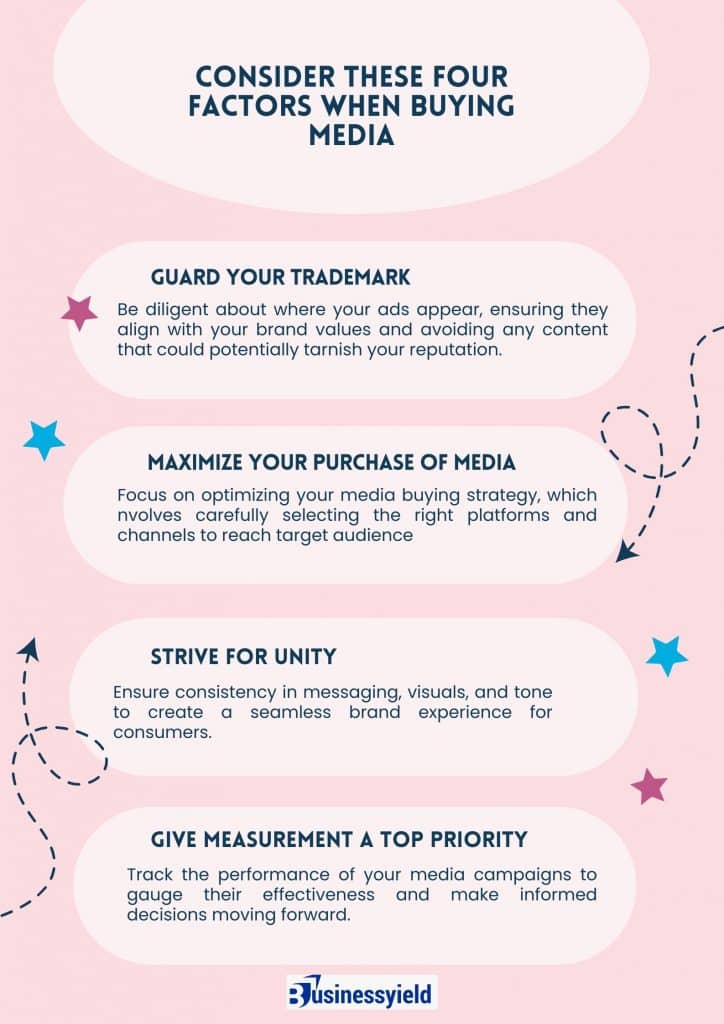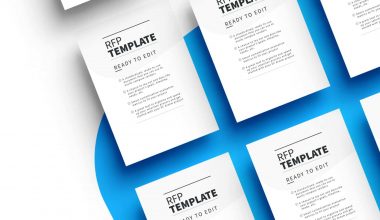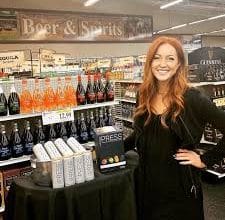Ever wondered how that eye-catching ad you keep seeing on your favourite website landed there? That’s the magic of media buying, and it’s my job to make it happen. As a media buyer, I’m the dealmaker behind the scenes, strategically securing the perfect spots to blast your brand message across the web and beyond.
Think of me as your advertising matchmaker. I don’t just throw darts at a board filled with random media outlets. Instead, I meticulously research and negotiate to place your ads on websites, social media platforms, and even good old-fashioned TV channels that resonate most with your target audience. It’s about efficiency. I want to get your brand seen by the right people, at the right time, without wasting a penny.
But hold on, there’s more to it than just picking a platform. I also negotiate the best rates, ensuring you get the biggest bang for your marketing buck. So, if you’re ready to take your brand from hidden gem to household name, keep reading as I’m going to explain the effectiveness of media buying, process, and media buying in marketing.
Keypoints
- Media buying is like the shopping trip for your brand’s advertisment
- When media buying is done right, it’s like magic. Your brand reaches the perfect audience, gets noticed, and – boom – customers discover your amazing product.
- Social media buying is another big trend. Platforms like Twitch, Instagram, TikTok, Snapchat, and Twitter are goldmines for reaching people.
- Media buying in marketing is about strategy, negotiation, and keeping a watchful eye to ensure your message hits the bull’s eye!
What Is Media Buying
Media buying is like the shopping trip for your brand’s advertising. Imagine you have this amazing product and want to get it in front of the right people at the perfect moment. That’s where I come in, the media buyer.
My job is to find the ideal places to put your ads. Think TV shows your target audience watches, websites they browse, or even billboards they drive past every day. It’s all about finding the sweet spot – placements that are relevant to your brand and reach the most people possible, while keeping the costs down.
It’s not just about throwing your ad anywhere. Let’s say you’re selling a revolutionary new face cream. I wouldn’t stick that ad in the sports section, right? Instead, I’d find a beauty website with articles about skincare or the beauty aisle on Amazon. Perfect context, perfect audience.
Now, achieving this advertising nirvana requires teamwork. I work hand-in-hand with media planners. They’re the strategists who map out the campaign’s goals, like brand awareness or driving sales. Once we have that blueprint, I put it into action. I negotiate with different media outlets, like TV networks or social media platforms, to secure those prime ad spots at the right time and frequency, all within budget.
In the end, when media buying is done right, it’s like magic. Your brand reaches the perfect audience, gets noticed, and – boom – customers discover your amazing product. It’s all about finding the best spots for your message to resonate, and that’s what I do!

Consider These Four Factors When Buying Media
When diving into media buying, it’s crucial to keep a few key factors in mind to ensure you’re making the right choices for your brand.
#1. Guard Your Trademark
I ensure that I protect my brand. This means being diligent about where my ads appear, ensuring they align with my brand values and avoiding any content that could potentially tarnish my reputation. It’s crucial to maintain a positive brand image in the eyes of consumers.
#2. Maximize Your Purchase of Media
I focus on optimizing my media buying strategy. This involves carefully selecting the right platforms and channels to reach my target audience effectively. Whether it’s social media, television, or online publications, I aim to allocate my budget where it will yield the highest returns and maximise my reach.
#3. Strive for Unity
Cohesion is another vital aspect I consider. I want my media campaigns to tell a cohesive story across all channels. This means ensuring consistency in messaging, visuals, and tone to create a seamless brand experience for consumers. By maintaining cohesion, I can reinforce key brand messages and build stronger connections with my audience.
#4. Give Measurement a Top Priority
I prioritize measurement. It’s essential to track the performance of my media campaigns to gauge their effectiveness and make informed decisions moving forward. Whether it’s through analytics tools, surveys, or other metrics, I seek to gather data that provides insights into audience engagement, conversion rates, and overall ROI. By prioritizing measurement, I can continually refine my media buying strategies and optimize future campaigns for even greater success.
In conclusion, when buying media, I always keep these four factors in mind: protecting my brand, optimizing my media buying, aiming for cohesion, and prioritizing measurement. By doing so, I ensure that my campaigns are not only effective but also reflective of my brand values and objectives.
Media Buying Trends
Media buying has changed dramatically since the days of just buying a single ad in a magazine. Gone are those simpler times! Now, it’s a whole new world with fancy tech like machine learning at its core. This lets me analyze tons of audience signals, like what people are liking and sharing on social media, to understand exactly how they discover products and services.
Also, programmatic display advertising is all about using this tech to reach the perfect audience for my brand. It’s like a super-targeted laser instead of a scattershot. With the help of my media partners, I can tailor ads based on people’s behavior and lifestyle. Think of it like this: imagine showing climbing gear ads to people who follow rock climbing accounts online, or makeup tutorials to beauty enthusiasts. Plus, I can use real-time data to tweak my message and make sure it resonates. There’s even cool stuff like connected home strategies, where I can reach people on their smart devices – pretty wild, right?
Social media buying is another big trend I can’t ignore. Platforms like Twitch, Instagram, TikTok, Snapchat, and Twitter are goldmines for reaching people. Paid social advertising on these platforms can be way more effective than just throwing up some random posts. It’s like having a direct line to talk to my audience.
Finally, let’s talk about demand-side platforms (DSPs). These are power tools for media buying. The right DSP has a massive reach, amazing customer support, and fancy analytics that help me understand what’s working and what’s not. It’s like having a wise advisor by my side, making sure I get the most out of every penny I spend.
So, you see, media buying isn’t just about buying ad space anymore. It’s about using cutting-edge tech, social media savvy, and the right tools to reach the right people at the right time. That’s how I win in this ever-evolving game!
BusinessYield Media Buying Template
What Is Media Buying In Marketing
Let’s examine media buying as it relates to marketing. Basically, I’m the quarterback, calling the shots for where your ads go. But before I spike the ad football into the end zone (hopefully with a touchdown!), there’s a whole game plan in place.
The media planning team is my scouting crew. They research the audience, figure out where they hang out online and offline (think sports channels, trendy websites, that kind of thing), and what their preferences are. Armed with this intel, I jump in.
Now, it’s negotiation time. I hit the phones, talking to websites, social media platforms, even TV and radio stations. My mission? To snag the best ad spots for your brand. Imagine a billboard on a highway everyone uses during rush hour – that’s prime real estate, and I have to obtain it at the best deal I can within the limits we established.
But it’s not just about snazzy locations. Timing is crucial. You wouldn’t want your ad for hiking boots to air at 3 AM, right? So I secure placements during the hours your target audience is most active. We’re talking laser focus here!
Once the deals are done, I don’t just sit back and relax. I have to see to it that everything goes as planned. Think of it like monitoring the referees – are the ads showing up where they’re supposed to, and are they the right size? Using fancy marketing tools, I track everything, making sure your message reaches the right people at the right time.
That’s the media buying game. It’s about strategy, negotiation, and keeping a watchful eye to ensure your message hits the bullseye!
Media Buying Process
When it comes to the media buying process, it’s a methodical journey that involves several key steps. I’m about to take you on a wild ride through the world of media buying. It’s my job to turn a marketing plan into reality, which means finding the perfect spots to place our ads and getting the biggest bang for our buck.
#1. Review the Media Plan
This is our roadmap, outlining the target audience, campaign goals, and budget. I need to understand who we’re trying to reach, what message we want to convey, and how much we have to spend. Knowing this sets the stage for the next step
#2. Create a Target List
Think of the target list as a guest list for a super exclusive party. We don’t want to invite everyone, only the people who are most likely to be interested in what we’re offering. So, I research publications, websites, social media platforms—basically, any media channel where our ideal customer hangs out. The goal is to create a shortlist of the best places to showcase our ads.
#3. Create and Send RFPs
This is a formal invitation to media outlets, saying, “Hey, we have this awesome campaign, and we think your platform would be a great fit. Here’s what we’re looking for, tell us what you can offer!” I whip up these RFPs, outlining our target audience, budget, and desired ad placements. Then, I send them out to the media outlets on my shortlist.
#4. Evaluate Possibilities and Buy Media
it’s time to sift through the responses. Media outlets will come back with their proposals, detailing their ad inventory (the available space for our ads), pricing options, and audience demographics. This is where the evaluation magic happens. I compare costs, analyze audience data, and see which options best align with our campaign goals. Finally, with ninja-like negotiation skills, I secure the best media buy possible.
#5. Send Insertion Orders.
Once the media is purchased, it’s time to solidify the details with an insertion order (IO). This is like a signed contract between me and the media outlet, specifying exactly where and when our ads will run. Think of it as booking a reservation for our ad at a specific time and place.
#6. Develop Creativity.
I also work closely with the creative team to develop killer ads that resonate with our target audience. Eye-catching visuals, and compelling copy – it all comes together to bring the campaign to life.
#7. Keep Track of Results.
I track the campaign’s performance like a hawk, monitoring impressions, clicks, and conversions. Are we reaching the right people? Is the message hitting home? This constant monitoring allows me to fine-tune the campaign on the fly, maximizing its effectiveness and ensuring we get the most out of our media buy.
So, that’s the media buying process. It’s a strategic dance of research, negotiation, creativity, and analysis, all aimed at putting our message in front of the right people at the right time. And let me tell you, when it’s done well, it’s a beautiful thing to watch.
Media Buying Example
Imagine you’re a media buyer, like me. Our job is to get the right ads in front of the right people at the right time. It’s not just about throwing ads everywhere. We strategically find placements that make sense for the product and the audience.
Take face cream, for instance. If I’m working with a brand that makes a luxurious anti-aging cream, I wouldn’t put their ad on a website about extreme sports. Instead, I’d target beauty websites or platforms like Amazon’s Beauty and Personal Care channel. Here, potential customers are already browsing and researching products they might be interested in buying. My goal is to place the ad alongside content that resonates with them, like an article on the best anti-aging ingredients. It’s about creating a natural connection between the ad and what the audience is already looking at. This contextual placement makes the ad more likely to grab attention and get results. It’s like whispering the perfect message in someone’s ear at exactly the moment they’re open to hearing it.
What Are the Steps in Media Buying?
First, I research the best places to put your ads, like websites or TV shows, to reach your target audience. Then, I negotiate deals with those platforms to secure the ad space at the best price. Once we have a plan in place, I finalize insertion orders, which are contracts locking in the details. We launch the campaign, but my job isn’t over! I closely track how the ads perform, making tweaks to maximize their impact. Finally, I make sure the bills match our agreements and report back on the campaign’s success. It’s all about getting your message in front of the right people, efficiently.
What Are the Three Rules of Media Buying?
Let me break down the secret sauce for me: getting the most out of my media buys. First, it’s all about constant tweaking – gotta keep a close eye on who’s seeing the ads and adjust accordingly to reach the exact right people. Second, consistency is key. My message and creativity need to sing in harmony across all platforms, you know? Finally, I can’t just throw money at the wall and hope for the best. Tracking the results is what tells me what’s working and what’s a dud, so I can make data-driven decisions and stretch my budget further.
What Is the Difference Between Media Buying and Digital Marketing?
Digital marketing is like the overall game plan. We figure out the best online spaces to reach your target audience, like social media or specific websites. We’re talking strategy! But we don’t buy those ad spots ourselves. That’s where the media buying agency comes in. They’re the ad negotiators, securing the placements we recommend at the best price. Meanwhile, the ad agency works on the creative side, crafting catchy messages and visuals that will grab attention. We all play different roles in making your campaign a success!
Are Facebook Ads Media Buying?
Absolutely! Facebook Ads are media buying in action. As a digital marketer, media buying is my bread and butter. It’s all about securing space to showcase ads, and Facebook offers a fantastic platform for that. We can target specific audiences right there on social media, or hit users across websites and apps too – it’s super versatile!
What Is Media Planning vs Media Buying?
Imagine this: I craft a strategic roadmap for our ad campaign, researching the best channels to reach our target audience. Then, I hand it to a skilled negotiator who goes out and secures the placements within our budget. That’s the difference between media planning and buying! I’m the planner, figuring out “where” to advertise. The buyer takes my plan and gets us the best deals on those spots. We work together to make sure the campaign reaches the right people, at the right price.
- How to Advertise on Google: Beginners Guide
- MEDIA PLANNING: What Is It & Why Is It Important?
- SOCIAL MEDIA CAMPAIGNS: The Ultimate Guide to Social Media Marketing Campaigns
- THE BEST 2023 STRATEGIES FOR SOCIAL MEDIA MARKETING (BEST EASY GUIDE)






